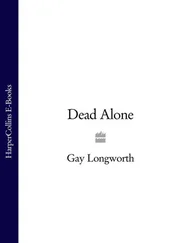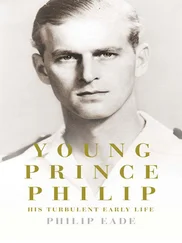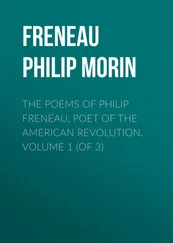As it was, the attempts to decentralize decision-taking, encouraging regional officialdom and managers to take more power into their hands, drove the system towards a precipice. After some initial confusion, managers and officials began to take Gorbachev at his word. In doing so they undermined the authority of the central institutions on which the leadership depended for the execution of its policies. Furthermore Yeltsin’s assault on the Communist Party removed Gorbachev’s most effective lever of government. But, perhaps Gorbachev was the architect of his own failure. As he admitted in retrospect, he had certainly been remiss in failing to keep the money supply in check. As a result, inflation gathered speed, destroying savings and creating increasing distress. Communist Russia was an essentially makeshift contraption. Born of war and revolution, it had been shaped by necessity and hardened by time into a fixed, rigid and ultimately brittle system.
Gorbachev deserves credit for positive achievements. 24He, more than anyone else, was responsible for changing Russia’s political configuration — albeit in a way he had neither foreseen nor intended. He also did great harm, though without intending to. Unlucky and incautious, he was soon overwhelmed by the rush of events and by successive crises. Having bravely begun the dangerous process of radical reform, he suddenly found the machine careering onward and downward out of his control. In the end, then, the verdict must be death by misadventure.
The rejoicing over the collapse was great. Yet the advent of democracy was to solve no problems, and many who rejoiced at the time were to regret the Soviet Union’s demise. Most of the good things which both the dissidents and Western politicians and ideologues forecast would emerge from the collapse of Communism did not materialize. Indeed, most Russians were to find the first fruits of the freedom they had been promised very sour indeed. It is on this aftermath — the condition of Russia in the post-Communist era — that we must now focus, for that is the soil in which any future expansion will be rooted.
WHEN THE SOVIET Union collapsed, crowds swarmed out on to the streets of central Moscow and St Petersburg to greet the new order. They were mostly younger people and their expectations matched their excitement. Russia was free. The stern face of authority was fast fading away; political correctness and restrictions were things of the past. Untrammelled now by empire, Russians would no longer be isolated from the world. They would be ruled by democracy instead of tsars and commissars, and join the global economy Western statesmen and economists had forecast that investment would flow in from Wall Street, the London Stock Exchange and all the other bourses of the free world. A vibrant free economy would rise up in place of the moribund, now crumbing, bureaucratic economy People would have opportunity and choice instead of dull predictability.
A handful of Russians were soon to become wealthy beyond dreams, as in a fairy tale, though a few were to perish at the hands of contract killers, and one or two even ended up in jail for fraud. Shops in city centres were filled with an amazing variety of expensive goods. Mercedes limousines, Cardin dresses, blue jeans and Macdonald hamburgers proclaimed the coming of the new age. But for most people the euphoria was momentary, the aftertaste bitter.
More and more old ladies stood patiently in lines outside metro stations hoping to sell a treasured possession, a cigarette or two, or a wilting posy of wild flowers to buy some food. Infants died of malnutrition; young women and children were recruited for the prostitution and pornography industries, and not a few of them exported. The use of drugs increased, forgotten diseases like typhus returned and new ones like AIDS, virtually unknown in the Soviet era, began to spread. The welfare system that had for so long sheltered the population steadily deteriorated. The birth rate rapidly declined; the death rate soared.
As in the Time of Troubles four centuries earlier (See Chapter 6), disaster struck six years out of seven, in the form not of unusual weather and crop failure this time, but of precipitous industrial decline. By 1998 the country’s gross national product was less than half what it had been in 1990. Young scientists emigrated, and capital, desperately needed for investment, flowed out to foreign bank accounts. One of the brighter spots in the new, dark world, was shone by schoolteachers who continued to turn up in their classrooms even though some had not been paid for months.
What was the source of the disaster? Was it the inevitable consequence of an inevitable transition? Was it due to Communism and the bad habits it encouraged; or, as many Russians believed, the work of the United States? Washington certainly wished former Communist states to join the free-trade system and, as Bismarck had noticed a century and a half earlier, free trade favours robust economies, not vulnerable ones like Russia’s. Could it have been the fault of Russia’s own corrupt elite, the so-called nomenklatura, many of whom had also occupied important positions under Communism? Or were misconceived policies of the new men led by Boris Yeltsin and their advisers to blame?
The decline had begun under Gorbachev but little had been done to stop it. Inflation continued to spiral upward, reaching an annual rate of over 2,000 per cent before it eventually abated. The social impact of this factor alone was immense. Savings were wiped out; investment ceased. The International Monetary Fund advanced loans with conditions attached and some of the richer countries pitched in, notably Germany, which advanced Russia the equivalent of over $24 billion between 1989 and 1993, 1but most of these loans fell into the wrong hands and eventually disappeared into numbered Swiss bank accounts and American stocks. 2All that accumulated for Russians in Russia was foreign debt, which had hardly existed in the Soviet era. On the other hand Russia was no longer burdened by empire. It had shrunk almost to the frontiers of 1700 in Asia and of 1600 in Europe, and its population was now no more than 150 million. This was a manageable size for an economy, and Boris Yeltsin now proceeded to dismantle and rebuild according to a new model.
Yeltsin’s understanding of economics was limited, but he followed the advice urged upon him by the West and set young Russian economists to the task. American free-market theory provided the framework, and shock therapy was favoured over gradualism. The ideas of the Harvard economist Jeremy Sachs, which had recently accomplished an apparent miracle in Poland, were particularly influential, and the revolution was implemented in a hurry. It seemed that this would make the transition painful but short, but according to Anatolii Chubais, one of those chiefly responsible for the manner in which the transformation was undertaken, there was another, political, motive. Yeltsin was anxious to destroy the base for any Communist revival in the future. 3So was Washington. Together they succeeded.
On 2 January 1992, the day after Russia began its separate existence, most prices were freed from state controls — though those for oil and other natural resources were kept so low that vast quantities were sold on abroad for profit. To make the new, higher, prices in the shops more affordable wages were raised, which meant further increases in the money supply. So did the huge subsidies doled out to public utilities. Together they led to a further spurt in inflation. This was eventually curbed by high interest rates, but investment dried up as a result. Furthermore, it suddenly became apparent that the lack of adequate financial institutions was a serious impediment. As the chief IMF economist remarked, the government had ‘tried to take a short cut to capitalism, creating a market economy without the underlying institutions, and institutions without the underlying institutional infrastructures’. 4
Читать дальше





![Stephan Orth - Behind Putin's Curtain - Friendships and Misadventures Inside Russia [aka Couchsurfing in Russia]](/books/415210/stephan-orth-behind-putin-s-curtain-friendships-a-thumb.webp)





